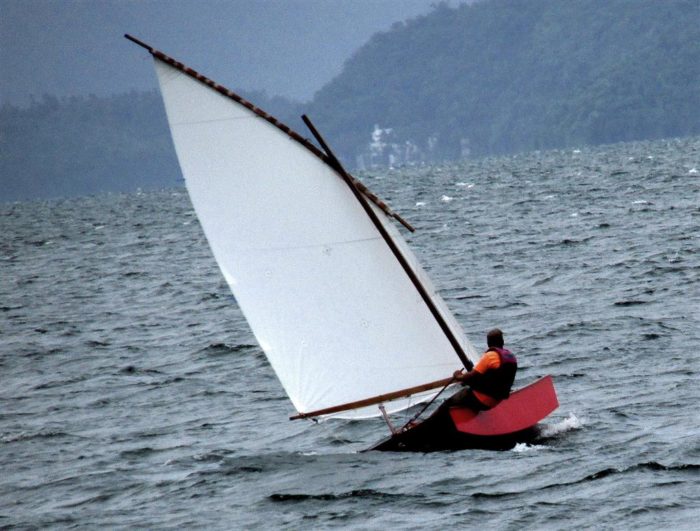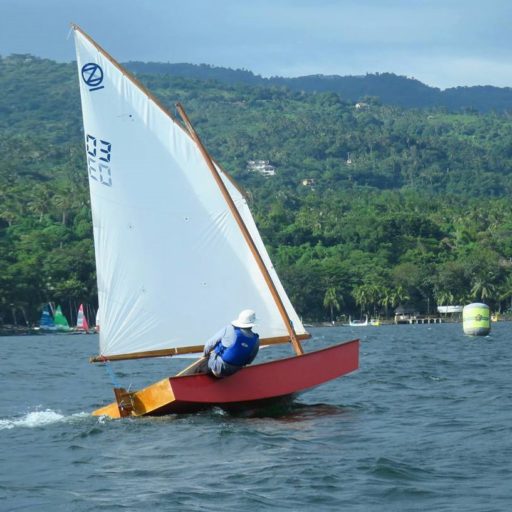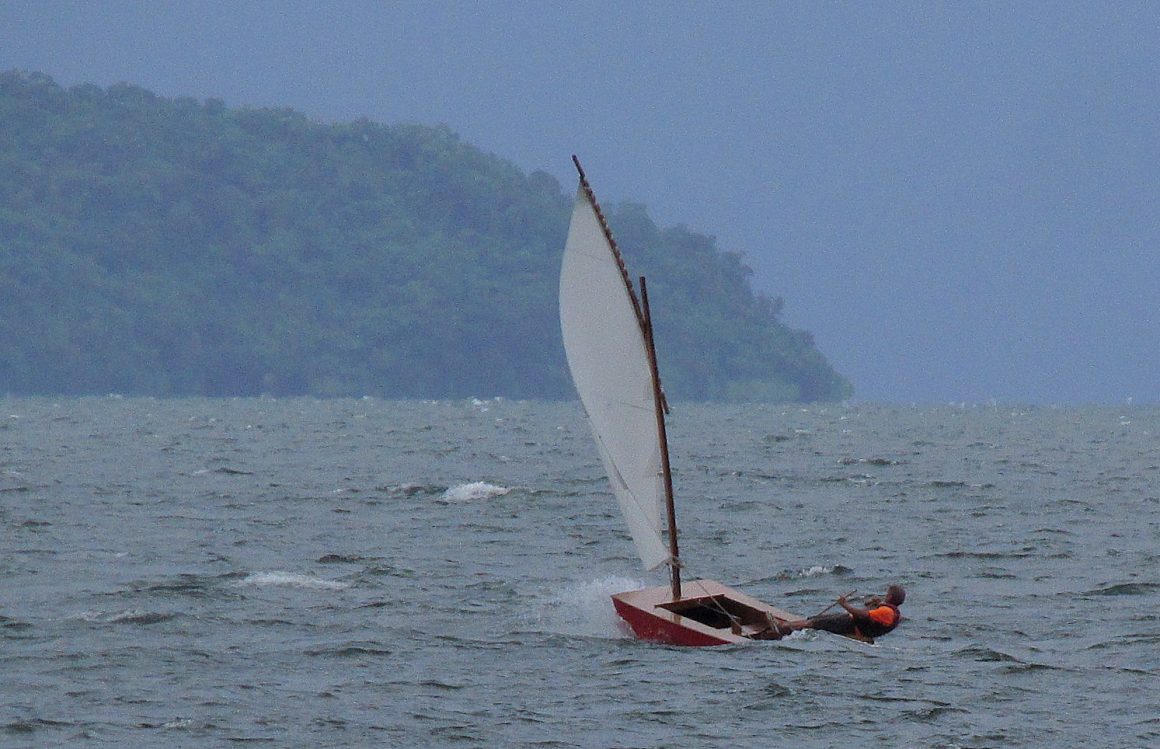It is not surprising that many are concerned about the Oz Goose sailing in waves.
It looks like a sailing dinghy with a wide nose will have problems.
However, we have found the opposite.
The Oz Goose Sailing Dinghy behaves well in waves and strong wind
That even inexperienced crews seldom capsize even in rough water and strong winds. This is important where we sail and teach sailing – as most crews on the boats are not very experienced sailors. And half the year Philippines gets reliable strong winds. The Geese get home and are very forgiving.
Here are some examples. This was a training day where the wind blew in and most other boats came in off the water.

What happens is that the front windward corner of the boat lifts and the waves go underneath the boat. They don’t often hit the front of the boat unless the crew is sitting too far forward.
With two aboard the boat will smash the waves out of the way without dropping speed much. It is better to try not to hit them, keep a bit of heel and keep aft, and boat will make good progress.

Lighter wind standard sitting position for Oz Goose – no or minimal waves.
For reference the best “forward position to use for general good conditions without too much chop is to sit in line with the buttstrap. The buttstrap is the piece of plywood in the cockpit area which joins the bottom into one piece. It is also the point of maximum hull depth.
It is the red rectangle on the floor in this drawing (regardless of wind direction! 🙂 The crew should group around it as shown in these three arrangements.
![]()
Sailing the Oz Goose in waves move aft – but how much?
We used to think as far back as possible.
Now we know how to measure it. When sailing upwind with the boat heeling very slightly we look at the spray from the leeward side of the bow.
We think it is allowable to see the spray from the front leeward corner about twice a minute. But if you see it more often – or with every wave, then move a bit further back – maybe about 75mm (3″) and sail a bit more. If it continues to splash too frequently – move back a bit more. Crew should sit close together to reduce the pitching.
In lighter winds we sit as far forward as we can without the bow hitting waves but when the bow starts touching it is faster to move back in the boat. The boat will tell you. But for low drag it is best to move forward when you can.

Occasionally the boat will bunny hop upwind.

Turning the Oz Goose downwind in stronger winds
Downwind there is a strong tendency for the bow to lift when the boat is going fast. This image is the same day as the first photo. This is good!

A side note – I hope you have practiced capsize and recovery technique – that way you can take care of yourself!
One up you have to sail around the worst of the wave tops like any other light dinghy – it is good technique for sailing fast and the nice balance of the Oz Goose assists the light steering. But with two in the Goose you can just smash the waves out of the way.
The boat handles weight well when there is a strong chop. If you see us going downwind it means we had to go upwind first 🙂 Rule always is on sail training days, head up to windward first, then the return trip is easy.
Oz Goose Sailing in absurd winds and waves using the techniques above

When the wind is really howling and there are serious whitecaps, then the fun starts. This was the fastest I’ve gone with three in the boat (below). They hadn’t sailed before so came back in a bit wide eyed. See the white caps and the spray blowing off the tops of the waves and the long wake of the Goose.

On this day we had the OzGoose group out ready for a race and the wind came up very strong. Being more experienced I did some speed runs and practiced sailing in waves, but all the beginner and intermediate sailors got themselves home having to sail against the high waves upwind. There was one capsize with the crew self rescuing with the rescue boat standing by.
Even under such pressure downwind with a blocking wave the Goose doesn’t exhibit any tendency to spear off to the left or right. Steering remains light and fingertip and the boat goes where you send it with the rudder. There was no water in the boat.
If the start boat had been in the way I wouldn’t have nosedived at all – just would have kept planing across the front of the wave at speed. But the committee boat forced me to steer square.
Oz Goose On the Ocean – does it handle the waves
Ocean swell is not a problem – it is always the short wavelength chop that stops boats from making progress.
But in the spirit of full disclosure, in a left over chop in light wind the Goose is noisy, but it is still quick.